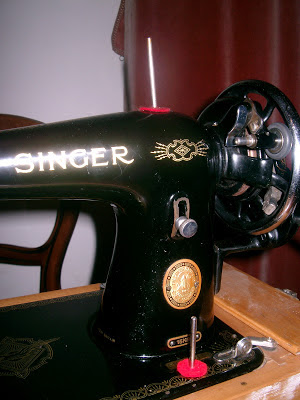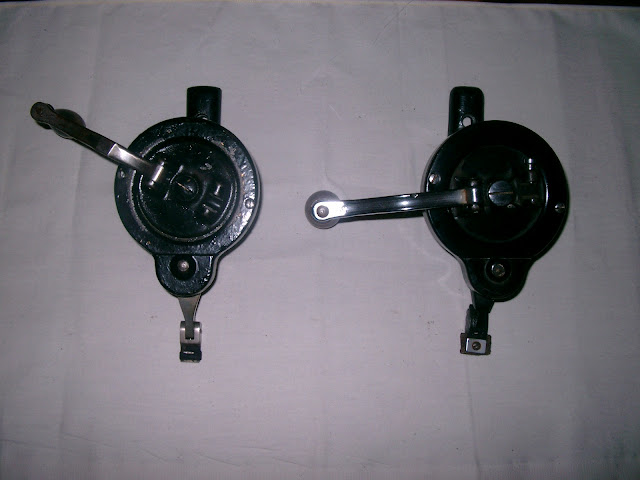I think it is nice, sometimes, to not really know where I am going until I get there. That is how it was with this piece of work. I cannot bring myself to refer to it as a project as that might imply that I had some sort of plan. At some point I had been loaned a Kaffe Fasset book that included a quilt top pieced from a variety of striped shirtings in four triangle squares.
Well I messed about with some triangles and came up with some less than delightful squares one of which just about looked like it might be a distant relative of something from a Kaffe Fasset quilt (see above top left corner. This was where direction changed both literally and notionally. The nasty squares became the back of a tiny sampler for some quilting
I had been reading about the wonderful quilts produced in Wales between the first and second world wars. What really fascinated me about these was reading how quilts were marked out by professionals who sometimes stamped the designs onto whole cloth quilt tops which would be sold and sometimes they were marked out by drawing around ordinary house hold objects like tea cups, plates and irons. I was rather captivated by the idea but doubtful that I would find myself marking out and hand quilting a double sized bedspread. Instead I made up a small quilt sandwich and grabbed a tea plate and pencil. I marked out this simple motif of circles leaves and chevrons.
Traditionally this type of quilting would be done by hand but I quilted this sampler on my Singer 15K hand crank machine making up the infill as I went along. It's a bit wonky here and there but I find the slightly naive effect pleasing. I ended up thinking of the technique as a sort of straight-line-semi-free-motion quilting. I doubt it will catch on but I felt I had spent enough time on this to add a binding. I did a bit of hand ladder stitching on the binding - way too tight just look at all those puckers! I've hung this little oddity, from one corner, on a nail that was in the wall of the sewing room. I don't think anyone really knows what to make of it but yellow and white always makes me think of fried egg and somehow my interest in and appetite for Welsh and Durham whole cloth quilts has been whetted.



















































